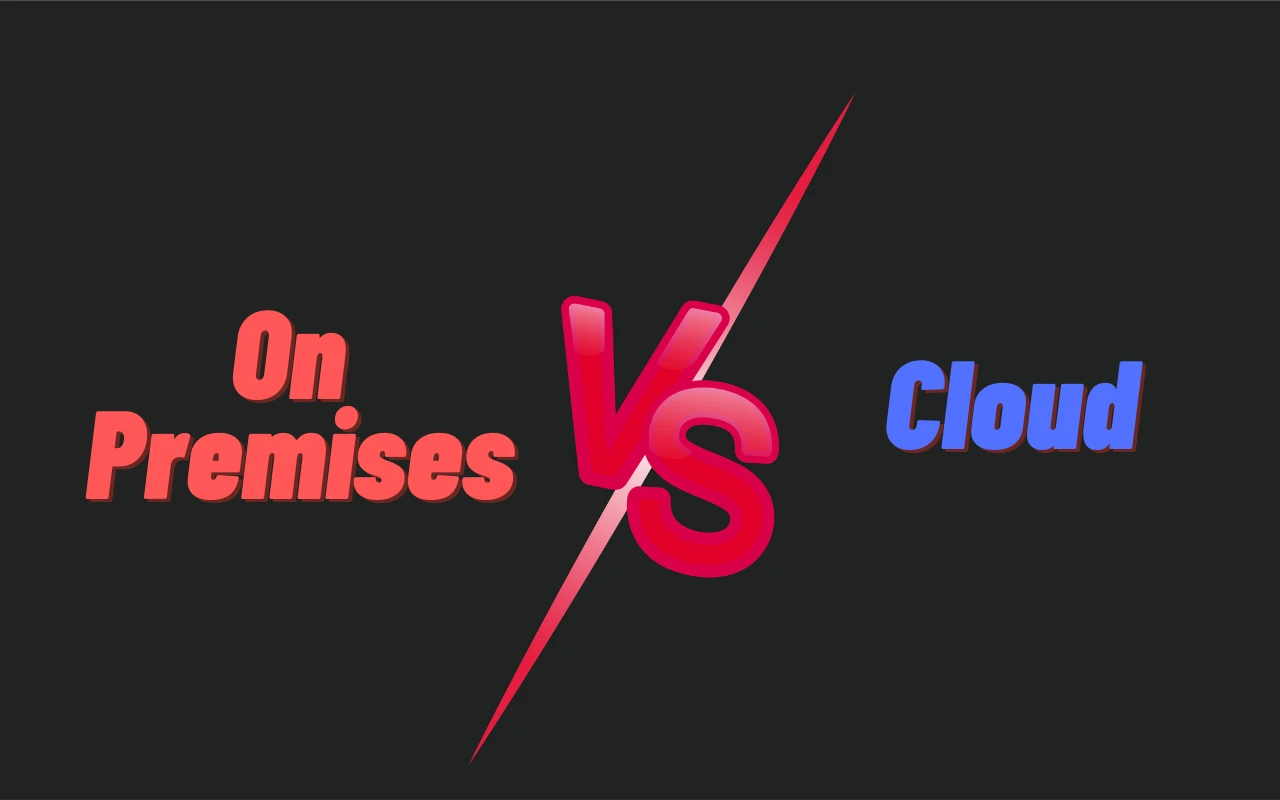
On-Premises or Cloud?
The landscape of IT infrastructure has evolved dramatically over the years, giving rise to two main options: on-premises solutions and cloud computing. Understanding the differences between these two can be crucial for businesses looking to optimize their operations and stay competitive.
On-premises solutions involve hosting hardware and software within a company’s physical location, offering control and customization. On the other hand, cloud computing allows businesses to access their data and applications over the internet, providing flexibility and scalability.
Choosing the right solution for your business isn’t just about keeping up with technology trends; it’s about making a strategic decision that aligns with your business goals and needs. With so many factors to consider, it’s essential to weigh the pros and cons of each option carefully.
What is On-Premises Solution?
On-premises solutions refer to software and hardware installed and run on physical servers within a company’s premises. This setup offers several advantages.
-
Control - Businesses have direct control over their IT infrastructure, from hardware setup to software customization.
-
Security - Enhanced security as data remains on-site and within the company’s managed environment.
-
Customization - Tailor-made solutions to meet specific business needs.
Businesses that prioritize data control, require specific customizations or operate in industries with strict compliance regulations often lean towards on-premises solutions.
For example, financial institutions and healthcare providers may prefer on-premises setups to ensure their sensitive data remains protected and compliant with industry standards.
Did you know that despite the rise of cloud computing, many businesses still opt for on-premises solutions for their mission-critical applications? This is because on-premises setups can provide a sense of security and reliability that some businesses prefer.
While on-premises solutions offer control and security, cloud computing brings a whole new level of flexibility and scalability. Let’s get into what cloud computing entails.
What is Cloud Computing?
Cloud computing allows businesses to access their data, applications, and services over the internet, rather than relying on physical servers located on-site. Here are some key benefits:
-
Scalability - Easily scale resources up or down based on needs, without managing hardware upgrades.
-
Cost-Efficiency - Operate on a subscription or pay-as-you-go model, eliminating significant upfront investments.
-
Accessibility - Access data and applications from anywhere with an internet connection.
-
Security - Built-in security measures ensure data protection even when accessed remotely.
Cloud solutions are particularly beneficial for startups and growing businesses that experience fluctuating demands.
Did you know that over 90% of companies use some form of cloud services today? The convenience and scalability of cloud computing have made it an integral part of modern business operations.
Now that we’ve covered the basics of on-premises and cloud solutions, let’s explore the key differences between these two approaches and how they impact your business.
Key Differences Between On-Premises and Cloud
Choosing between on-premises and cloud solutions depends on several factors. Here are some key differences:
Cost
On-Premises: Requires significant upfront investment in hardware and software. Ongoing costs include maintenance, upgrades, and energy consumption.
Cloud: Typically operates on a subscription or pay-as-you-go model, reducing initial costs. Ongoing costs are based on usage, making it more predictable.
Maintenance
On-Premises: Maintenance and upgrades are managed by the in-house IT team, which can be resource-intensive.
Cloud: Maintenance and updates are handled by the cloud provider, freeing up internal resources.
Scalability
On-Premises: Limited by the physical capacity of the hardware. Scaling up requires additional hardware purchases.
Cloud: Highly scalable. Resources can be easily adjusted based on demand, without physical constraints.
Security
On-Premises: Data remains on-site, under the direct control of the business. Security measures are managed internally.
Cloud: Security is managed by the cloud provider, often with robust protocols. However, data is stored off-site, which may raise concerns for some businesses.
Accessibility
On-Premises: Access is typically restricted to physical locations or through secure VPNs.
Cloud: Data and applications can be accessed from anywhere with an internet connection, offering greater flexibility.
Customization
On-Premises: A high level of customization is possible, allowing businesses to tailor solutions to their specific needs.
Cloud: Customization options depend on the cloud provider’s offerings. Some limitations may exist compared to on-premises solutions.
Understanding these key differences can help you make an informed decision. However, the choice ultimately depends on your specific business needs and priorities. To further illustrate, let’s explore the pros and cons of each approach.
Pros and Cons: On-Premises vs Cloud
1. On-Premises Solution Pros and Cons
| Pros | Cons |
|---|---|
| - Complete control over your IT infrastructure | - Significant upfront investment in hardware and software |
| - Enhanced security since data is stored on-site | - Requires dedicated IT staff for maintenance and upgrades |
| - Tailored solutions to meet specific business needs | - Limited by the physical capacity of your hardware |
| - Easier to comply with industry-specific regulations | - Restricted to physical locations or secure VPNs |
2. Cloud Solution Pros and Cons
| Pros | Cons |
|---|---|
| - Easily scale resources up or down based on demand | - Less direct control over your IT infrastructure |
| - Lower upfront costs with a subscription or pay-as-you-go model | - Reliant on the cloud provider’s security measures, which may raise concerns for some businesses |
| - Access data and applications from anywhere with an internet connection | - Limited by the cloud provider’s offerings |
| - Managed by the cloud provider, reducing internal workload | - Challenges with industry-specific regulations depending on the provider’s compliance standards |
Now that we’ve compared the pros and cons, it’s clear that both on-premises and cloud solutions have their unique benefits and drawbacks. The right choice depends on your business’s specific needs and circumstances. Next, let’s consider some key factors to help you make an informed decision.
Factors to Consider When Choosing Between On-Premises and Cloud
1. Business Size and Industry
On-Premises - Better for larger businesses or those with strict rules (like finance and healthcare) needing tight control.
Cloud - Great for startups, small to medium businesses, or any business that needs flexibility
2. Budget and Cost
On-Premises - Big initial costs for hardware and maintenance.
Cloud - Pay-as-you-go, which helps manage budgets better.
3. Security and Compliance
On-Premises - More control over security, easier to meet industry rules.
Cloud - Strong security from the provider, but make sure they meet your specific needs.
4. IT Resources
On-Premises - Needs an in-house IT team for maintenance and support.
Cloud - The provider handles maintenance, reducing the need for a big IT team.
5. Growth and Scalability
On-Premises - Scaling up means buying more hardware, which can be slow and costly.
Cloud - Easy to scale up or down as needed, ideal for businesses with fluctuating demands.
Considering these factors can help you decide which option is best for your business. Next, let’s explore some real-world examples to see these solutions in action.
Real-World Examples
Case Study 1
Small Business Opts for On-Premises A small accounting firm decided to stick with on-premises solutions due to the sensitive nature of their data. They installed servers on-site, giving them complete control over their IT environment. This setup allowed them to customize their software to meet specific regulatory requirements, ensuring compliance and data security. Though it required a higher initial investment, the peace of mind it brought was worth it.
Case Study 2
Startup Embraces Cloud for Scalability A growing tech startup chose cloud solutions to manage their rapid expansion. With limited initial resources, the pay-as-you-go model of cloud computing was ideal. They could scale their resources up or down as needed, without the hassle of managing physical hardware. The flexibility and accessibility of the cloud allowed their remote teams to collaborate seamlessly, enhancing productivity and growth.
Case Study 3
Large Enterprise Uses a Hybrid Approach A large retail enterprise found that neither on-premises nor cloud solutions alone met all their needs. They adopted a hybrid approach, using on-premises solutions for their core business operations and cloud solutions for additional storage and backup. This strategy provided the security and control of on-premises solutions while leveraging the scalability and flexibility of the cloud.
These real-world examples show how different businesses leverage on-premises and cloud solutions based on their unique needs and circumstances. Understanding these scenarios can help you make an informed decision about which approach is best for your business.
In Conclusion
Deciding between on-premises and cloud solutions is a crucial decision that can significantly impact your business’s efficiency and growth. Both options have their unique advantages and drawbacks, and the right choice depends on your specific needs and circumstances.
On-premises solutions offer greater control, security, and customization, making them suitable for businesses with stringent regulatory requirements or those that need tailor-made IT environments. However, they come with higher upfront costs and require dedicated IT resources for maintenance.
Cloud solutions provide unmatched scalability, cost-efficiency, and accessibility, making them ideal for startups and growing businesses with dynamic workloads. While security is managed by the provider, ensuring that the provider meets your compliance needs is essential.
In a business landscape like this, having a robust and flexible IT infrastructure is key to staying competitive. Whether you choose on-premises, cloud, or a hybrid approach, aligning your IT strategy with your business goals will set you on the path to success.
Remember, there’s no one-size-fits-all solution. Evaluate your business’s unique needs, consider the factors we’ve discussed, and consult with IT experts to make an informed decision.





